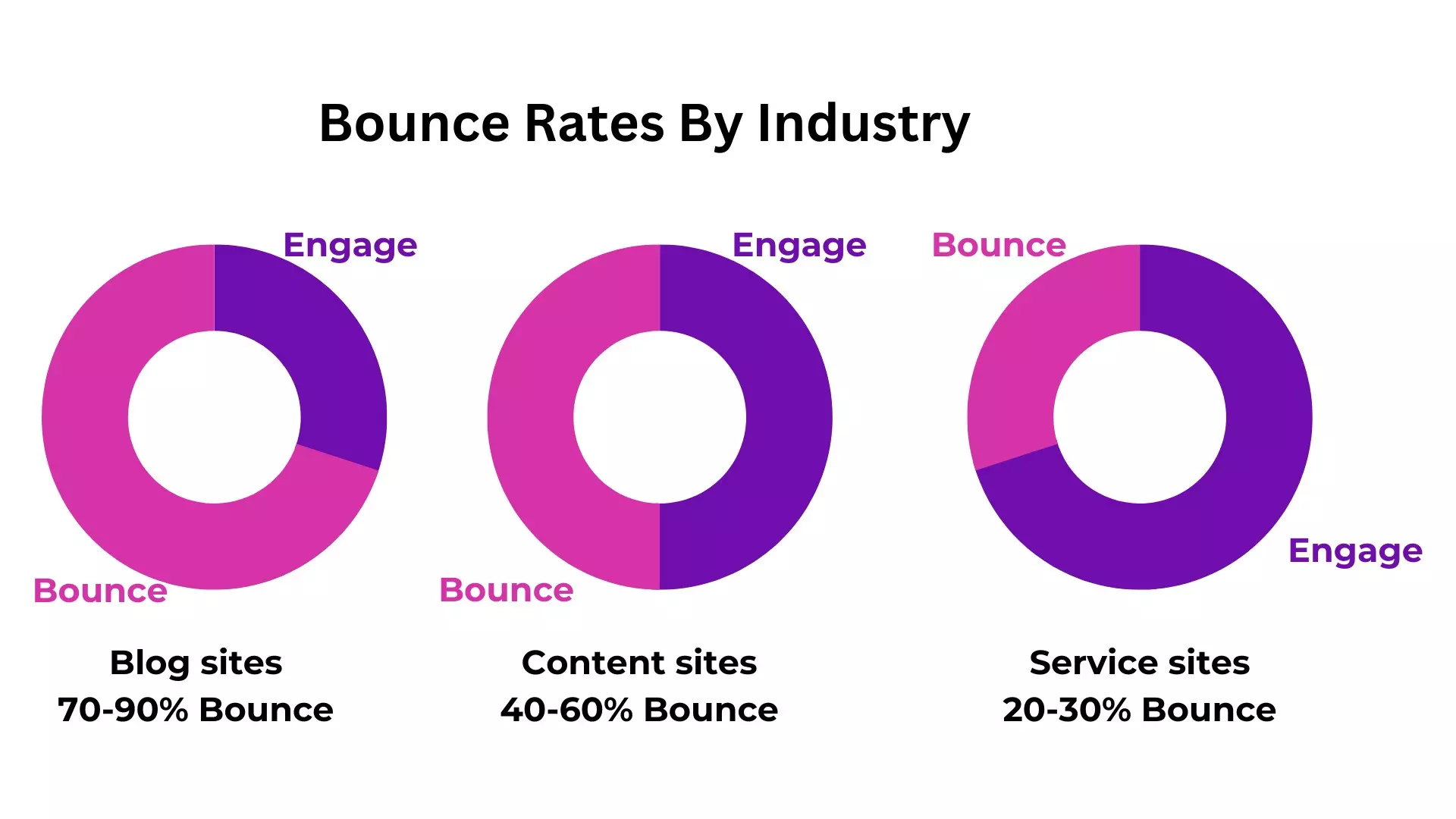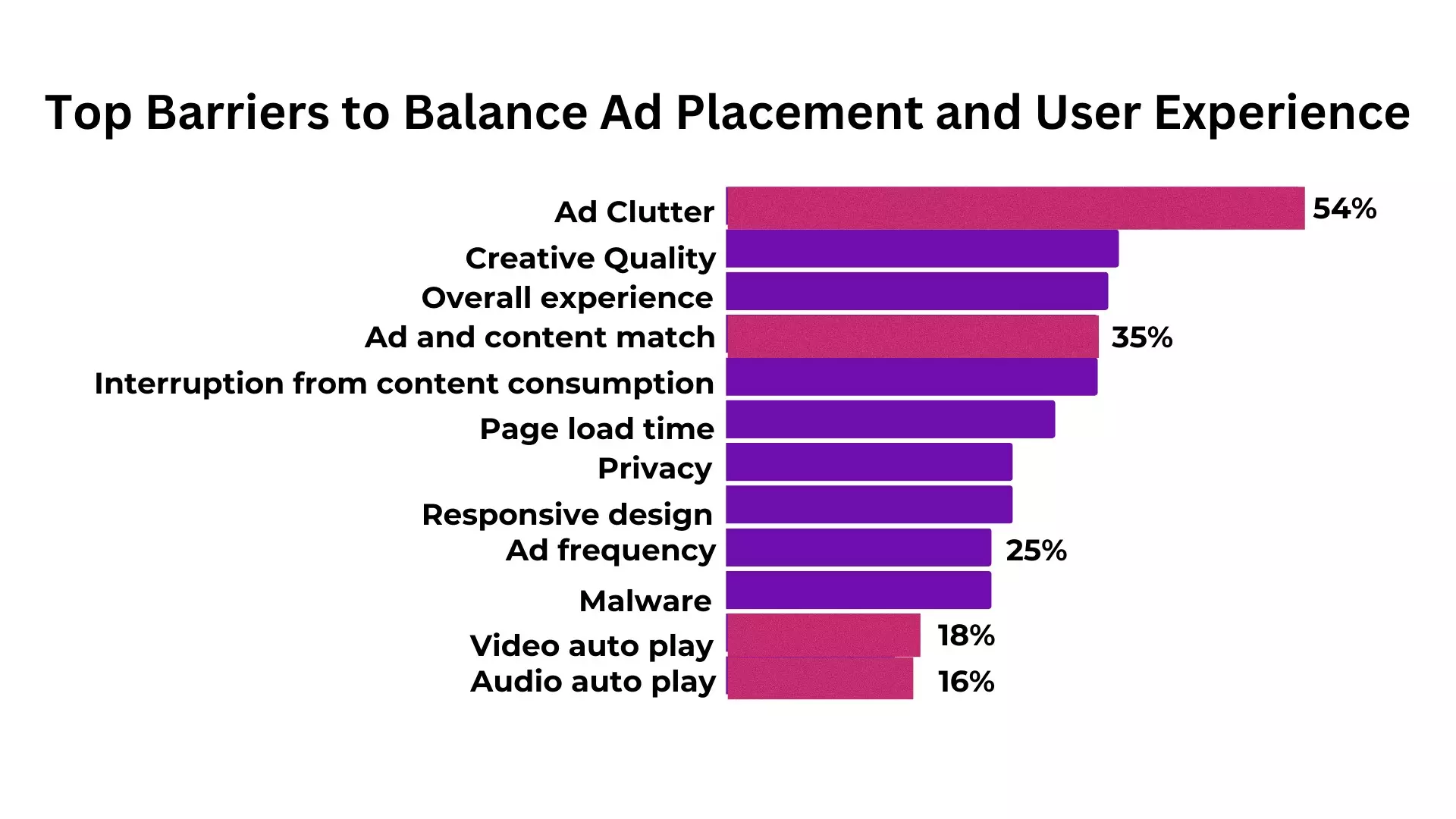As a publisher, you are already working on improving many user experience metrics with which Google ranks your site. Publishers indeed have to optimize UX metrics to get high demand for ad inventory and increase yield.
In that sense, bounce rate is one of the major metrics you can’t pass carelessly, as it is highly relative to your ranking and, ultimately, your ad revenue.
Bounce rate measures how long the users are engaging with your website. Its value ranges from 0 to 100%. The lower the percentage, the better the site score. According to Forbes Advisor, the average bounce rate falls between 41% and 51%, with the best range starting below 50%. But is it that easy to reach the ideal bounce rate? Let’s find out.
Table of Contents
What Is Bounce Rate?
Bounce rate is a user experience metric that measures how long the user engaged with the specific page. It is a session where only a single page is visited. When a user enters a page and leaves at the next second, the bounce rate will be 100%. It means that the user never stayed or engaged with your page.
The worst bounce rate is above 90%. If you are here, you need to take immediate action to start optimizing page elements. If you are in the normal range between 50 to 70%, keep optimizing page metrics to reduce it more and keep it in an ideal range.
What Causes Bounce Rate to Increase?
The bounce rate is directly proportional to the user experience and engagement with the website. Whenever users have a bad experience with the website, such as disturbing ads, poor content, and high latency, they leave the website. Other factors can be –
- Irrelevant content: Content is the reason users visit your website. Failing to meet the user intent within the first fold, you will risk losing the user.
- Too many ads: Cluttering your website with too many ads and unnecessary elements. There is an optimal count to display ads on the page. If you don’t follow them, they will keep on intruding on users while they read the content, leading to a bad user experience and a higher bounce rate.
- Poor latency: Low page loading speed is one of the major concerns of poor UX. Users nowadays expect content to load within a second. If you are not going to give what they want in that time, you will see your bounce rate going high.
- Compatibility issues: Bounce rate increases with poor website responsiveness across devices. If your page is breaking on different devices, your user experience will deteriorate, and so will their time spent on the website.
How Does it Impact Your Ad Revenue?
When Ad monetization is the standard revenue source for you, bounce rate plays a major role in getting high demand from the demand partners.
Demand partners naturally want higher viewability on their ads. Because of that, they are slowly changing their revenue model from the CPM to vCPM, i.e., from cost per thousand impressions that may be viewed or not viewed to viewable cost per thousand impressions. In that case, the websites with higher bounce rates are inversely proportional to the viewability, increasing CPMs and CTRs.
When you are not optimizing the bounce rate, the traffic to your website will gradually reduce, and so will the viewability of your ads. Eventually, the demand for your ad inventory will be reduced. No one will invest in an ad inventory that gives less exposure to their ads.
Best Strategies to Reduce Website Bounce Rate
Now you know that improving user experience is the only way to keep users engaged with your website and reduce bounce rates. But how to improve that?
We suggest optimizing the main elements of the website first. The three main elements you need to take care of are content, ad management, and technical issues.
Content: The king
Users visit your website for content. Your website is one of the thousands of resources available to them. You need to engage users with exceptional content to stand out from the competition and make users stay on your website. According to the bounce rate benchmark by CXL, the bounce rate for blog sites is in the high range of 70 to 90%.

What can you do? Simple, focus on the below points and keep following us:
- Quality content: Your content should give value to the readers and answers to their problems. Think out of the box to give users what they want. Write well-researched content.
Back up your suggestions with reliable sources and numbers to gain trust. Try to use simple English and deliver in-depth content. So that the user will feel enlightened and satisfied after reading. - Improve readability: Make your content easy to read. Don’t type long paragraphs. Break them down into 2 to 3 lines. Insert images, videos, and research-backed statistics in a well-formatted manner.
Use lists, tables, bullet points, and illustrations to make the content more understandable and appealing. Well-formatted text has a great effect on SEO and ranks well. It does attract users and engages them longer. - Up-to-date content: Today’s content will become obsolete tomorrow. Ensure your content is up-to-date. Because readers want only content that is very recent and gives factual information. So be aware of trends and change the content according to that and see the positive reflection on the bounce rate.
- Optimize link building: Improve the link structure of your website. Linking the relevant sites to your content adds value to your visitors. You need to link true sources with the correct anchor text. Don’t overdo it. Just add links at the optimal rate. It will increase user engagement and decrease the bounce rate.
Better ad management
We know that ads are the major source of revenue for you. However, cluttering the website with too many ads will hurt the user experience and eventually the bounce rate.
According to the 99 firms’s UX statistics, 57% of users leave the website because of ad cluttering, 35% from ad and content match, 25% from ad frequency, and around 20% from auto-playing audio and video ads.

You cannot cross these serious numbers just like that. Hence managing ads in a better way is the second important thing you need to do to achieve a good bounce rate.
- Optimal ad numbers: Just because you have a big website around your content, don’t insert ads wherever it is possible. Choosing the optimal number of ads that sync with user engagement is essential.
Also, don’t paste big ad sizes just because you have big spaces. Better follow IAB guidelines on ideal ad sizes. Try different combinations of mobile and website ad sizes, as it may have positive effects on revenue. - Ad placement and format combination: You must be trying all kinds of ads like pop-ups, ads embedded just above the fold, native ads, sidebar sticky ads, and less intrusive ads. Also, you might be trying different combinations of ad placements.
Trying different ad combinations and placements is okay, but you must know which combination works best for you. Displaying ads on the website results in only two things. Either it will intrude on users in the reading, or it will attract them to engage and interact with ads. Find the ad format and placement combinations that give the latter. - Pop-up ads- when to show and when should not: Usually, pop-up ads are highly intrusive ad format. It annoys users and appears when they are reading content seriously. So avoid showing pop-ups at the second when the user enters the website.
On the other hand, you can also show pop-ups when the users are ready to leave. Anyway, they are going to leave your website. There is no harm in it. One in ten users might fill out the form in case the ad is something they need. - Asynchronous loading: when you choose to load ads and content at the same time. In case ads are delivered late from its server, the content will also load late. So, users who are coming for your content feel bad. Try asynchronous loading to load the content first and then ads. In this way, ads will not affect any metric that roots bad user experience and higher bounce rate.
Technical issues
It is a third major factor affecting the bounce rate. Your website suffers from many technical issues. Even if you can’t optimize it all, just take care of the issues covered here. It relieves you from 60% of the problem.
- Improve page speed: According to the Semrush data shown below, the high loading time increases the bounce rate to the extreme level of 123%. This is not surprising in the era of people losing attention. So, you need to try whatever you can to increase your page speed like the ones given below.

- Heavy data in your content, like images, gifs, and videos, should be compressed with compression tools before uploading.
- Check the page speed insights to know where your page speed is affected and improve that.
- Remove unused plugins and scripts that stop your website from loading fast.
- Choose the best web host who can give high-speed loading service.
- Scan broken links: When users land on broken links, they leave without any second thought. So keep scanning for broken links at frequent intervals with tools like Semrush and Google Search Console and fix them.
- Innovative 404 page: Personalize your 404 page with thoughtful messages that lead them to the right link. It will save users from bad experiences even though they landed on the blank page.
- Mobile-friendly website: In this mobile-dominated internet, 55% of website traffic is from mobile devices. So build a highly responsive website across different devices, especially mobile.
- Improve vital landing pages: Improve the performance of the vital landing pages by using heatmap tools to see how users engage and interact with your website.
By collecting data about user behavior, you can revamp pages that align best with user browsing behavior, insert CTAs at the most optimal places, and thereby improve the user experience and bounce rate.
Dividing the optimization work into content, ad management, and technical issues, you can work organized by implementing the strategies mentioned. Now I can hear a question from you that….
Will These Strategies Work for Me?
As publishers, you should know that the bounce rate differs for different industries, channels, traffic sources, website types, and devices. The bounce rate benchmark will not be equal for e-commerce, lead generation, or blog websites. Similarly, it is not equal for the finance industry and technology domain.
In fact, it is not compulsory to have the lowest bounce rate on all kinds of pages. It is also good to possess a high bounce rate on a few pages that are designed to give, such as bio, contact form, privacy information, or checkout.
These single pages are designed to give information at once and leave.
So what I am saying is “ bounce rate differs”. Set your target and work towards that instead of following the standard range. On that journey, first, find what is the problem and the factors that cause the higher bounce rate.
Following that, try the strategies mentioned above and check how they work for you, test, and iterate approaches to make the improvement.
Achieving a lower bounce rate is not a one-day thing. Also, you can’t stop optimizing it after reaching the baseline. You need to work and scan the parameters like load speed, broken links, ad placement, and quality content to keep them in an ideal range and maintain a good bounce rate. Only in that way, you can increase demand for your ad inventory and ad revenue.
So, always bounce in and be ready to optimize the bounce rate to reap high yields, or else your users will bounce out!























